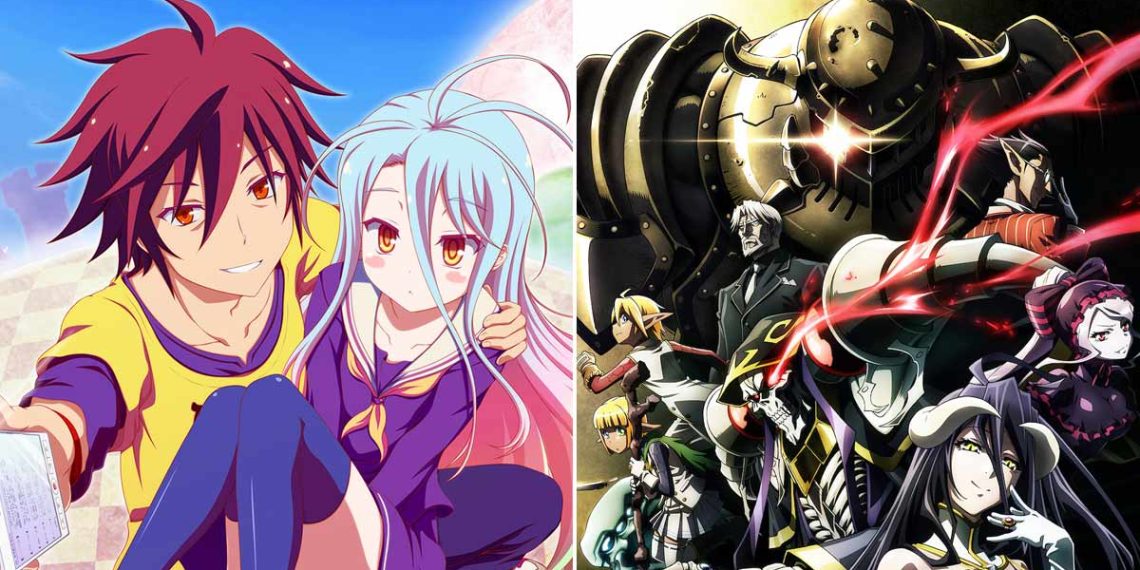Looking for game-themed anime to watch this Spring 2024 season? While there’s a bit of a scarcity in that department, fear not! Although not your conventional game-centric series, “Gods’ Game We Play” might just scratch that competitive itch you’re looking to satisfy. Think of it more like “Liar, Liar” than your typical gaming anime, but it still offers that thrilling competition vibe.
For fans of “Blue Archive,” the hunt might be a bit trickier to find the anime adaptation, but it’s definitely worth the search effort. However, if you’re coming up short on options in the current season, it might be time to go into some classics.
Older anime featuring games as a central theme could be just what you need to fill that void. So, whether you’re a seasoned gamer or just looking for some high-stakes entertainment, there’s something out there to keep you hooked until the next wave of gaming anime hits the scene.

Game anime fascinate their audience in much the same way Twitch streams do: there’s an exhilarating thrill in witnessing people’s passion for games and sharing one’s beloved hobby with others. Whether they portray card games, board games, or virtual reality adventures, the finest game anime leave no doubt in viewers’ minds about why characters have chosen their pastimes.
While many depict intense competition, game anime isn’t solely about watching characters emerge victorious. They offer a deeper narrative, showcasing characters growing alongside the game, honing their strategies, and bolstering their confidence as players. It’s a journey of progression, culminating in the mastery of techniques once regarded with awe.
Note: Animes are not shown based on ranking order.
10. Shangri-La Frontier

Shangri-La Frontier stands out in the game anime by presenting an MMORPG that feels like a plausible virtual world. While it may surpass the current capabilities of VR technology and includes some questionable mechanics, its core rules, concepts, and systems bear striking resemblance to real MMOs, unlike other shows such as Sword Art Online.
Sunraku, known for his talent in dissecting flawed games, decides to apply his skills to conquer the outstanding MMO, Shangri-La Frontier. As he navigates through epic battles against formidable bosses and gains the attention of fellow players, the series unfolds into an exhilarating action-packed adventure.
While not overly complex, Shangri-La Frontier offers an enjoyable celebration of online gaming. With top-notch animation and a charismatic protagonist, this shonen series is a must-watch for those seeking an anime set in an MMO that isn’t an isekai.
“Shangri-La Frontier,” a popular Japanese web novel series written by Katarina and illustrated by Ryosuke Fuji, has captured the imagination of fans with its unique blend of virtual reality gaming, adventure, and character development.
The series, which began as a web novel on the user-generated novel publishing website Shōsetsuka ni Narō, has been adapted into a manga series serialized in Kodansha’s Weekly Shōnen Magazine since 2020, and an anime adaptation by C2C was announced, bringing even more attention to this engaging story.
“Shangri-La Frontier” is set in a near-future world where advanced virtual reality technology allows players to immerse themselves fully in video games. The protagonist, Rakurō Hizutome, is a “trash game hunter,” a gamer who specializes in playing and conquering poorly made, bug-ridden games. Rakurō’s extraordinary skills in navigating and mastering these challenging games make him a legend in the gaming community.
However, Rakurō decides to take on a new challenge by playing “Shangri-La Frontier,” a top-tier VR game known for its impeccable design and vast open world. Unlike the “trash games” he usually plays,
Shangri-La Frontier is a masterpiece that requires a different set of skills and strategies. As he dives into this new adventure, Rakurō adopts the in-game persona of Sunraku, going on a journey filled with quests, battles, and encounters with other players.
Rakurō Hizutome (Sunraku): The protagonist, Rakurō, is a seasoned gamer with a penchant for playing poorly designed games. His expertise in dealing with game bugs and glitches makes him a formidable player. In “Shangri-La Frontier,” he takes on the persona of Sunraku, showcasing his adaptability and skill in a well-crafted gaming environment.
Pencilgon: A fellow player in “Shangri-La Frontier,” Pencilgon is known for her strategic mind and leadership qualities. She becomes one of Sunraku’s key allies, helping him navigate the game’s complex world and its myriad challenges.
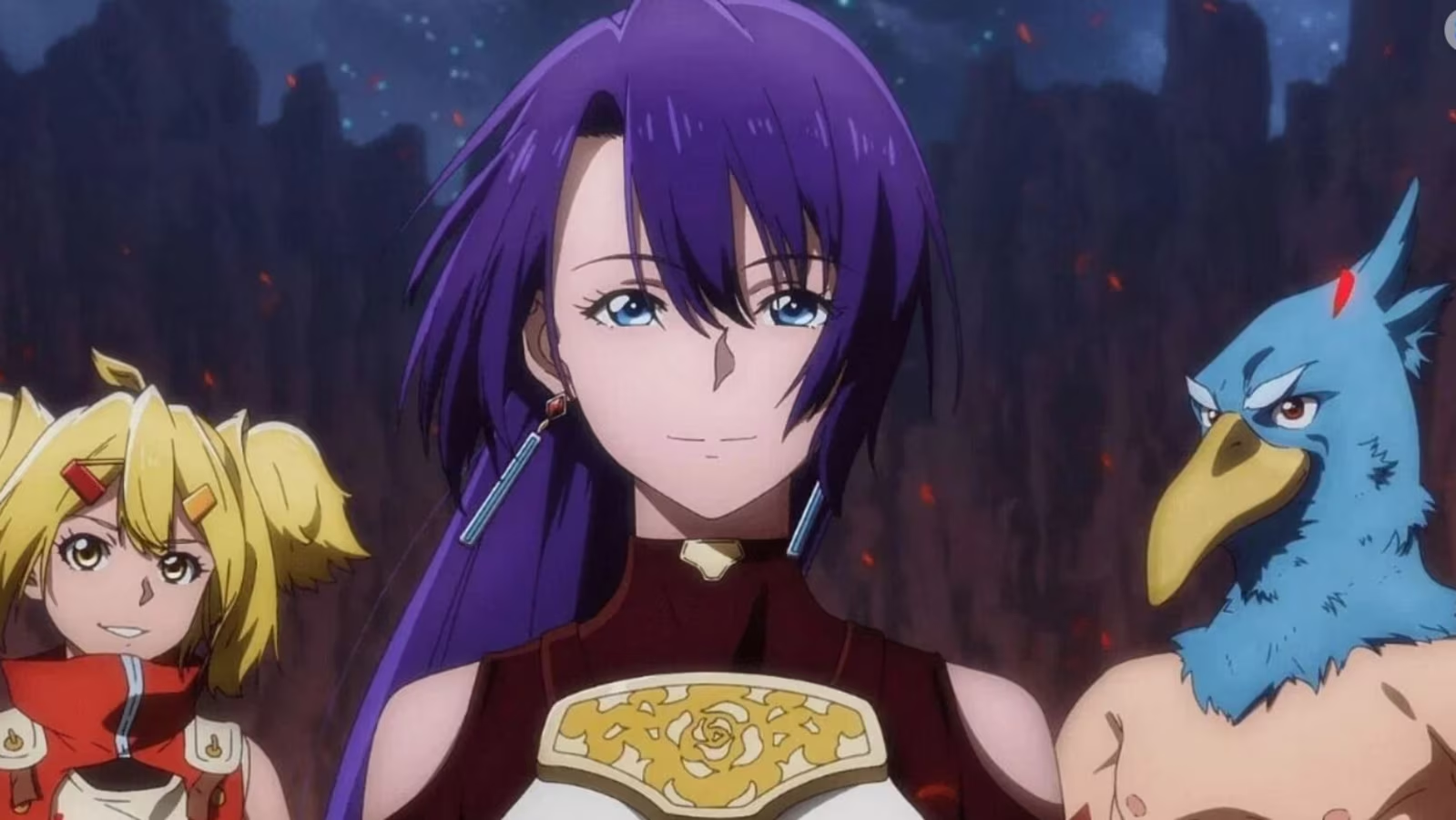
Oicazzo: Another player in the game, Oicazzo is a strong and reliable companion to Sunraku. His combat prowess and loyalty make him an invaluable asset in the various quests and battles they face together.
Arthur Pencilgon: A skilled and knowledgeable player, Arthur Pencilgon is an influential figure in the game’s community. His deep understanding of the game mechanics and lore provides crucial support to Sunraku and his friends.
One of the central themes of “Shangri-La Frontier” is the immersive experience of virtual reality gaming. The series goes into the intricacies of VR technology, game design, and the culture surrounding online gaming communities. It highlights the thrill and challenges of navigating virtual worlds, making it a relatable and engaging read for gaming enthusiasts.
Rakurō’s transition from mastering “trash games” to excelling in a high-quality game like “Shangri-La Frontier” emphasizes the importance of skill and strategy. The series showcases the protagonist’s growth as he adapts to new challenges and develops new tactics to overcome obstacles. This theme resonates with readers who appreciate stories of personal growth and mastery.
The relationships Rakurō forms with other players in the game highlight the importance of friendship and teamwork. As Sunraku, he builds alliances and collaborates with other skilled players, demonstrating how mutual support and cooperation are vital in achieving success in both gaming and real life.
“Shangri-La Frontier” is rich with adventure and exploration, offering readers a detailed and expansive world filled with quests, monsters, and hidden treasures. The series captures the excitement and unpredictability of exploring a vast virtual surface, appealing to fans of adventure and fantasy genres.
The manga adaptation of “Shangri-La Frontier,” illustrated by Ryosuke Fuji, brings the story to life with dynamic and detailed artwork. The character designs are distinctive and expressive, capturing the personalities and emotions of the players both in and out of the game. The action scenes are particularly well-executed, with fluid and intense combat sequences that enhance the sense of immersion and excitement.
The visual representation of the game’s world is also noteworthy, with intricate backgrounds and imaginative creature designs that add depth and richness to the story. The manga successfully translates the novel’s vivid descriptions into visually appealing panels, making it an enjoyable read for fans of the genre.
“Shangri-La Frontier” has been well-received by both critics and readers for its engaging story, well-developed characters, and unique take on the virtual reality gaming genre. The series’ blend of humor, action, and adventure, coupled with its insightful commentary on gaming culture, has garnered a dedicated following.
The announcement of the anime adaptation has further increased the series’ popularity, with fans eagerly anticipating the animated portrayal of Rakurō’s adventures in “Shangri-La Frontier.” The combination of a compelling narrative and high-quality artwork has solidified the series’ position as a standout in VR-themed stories.
“Shangri-La Frontier” is a nice and imaginative series that explores the fascinating world of virtual reality gaming through the eyes of a skilled and determined protagonist. Its themes of skill development, friendship, and adventure, combined with its detailed and dynamic artwork, make it a must-read for fans of gaming and fantasy genres.
Whether through its original web novel, manga adaptation, or the upcoming anime, “Shangri-La Frontier” offers a thrilling and immersive experience that resonates with readers and viewers alike.
9. Hack//Sign
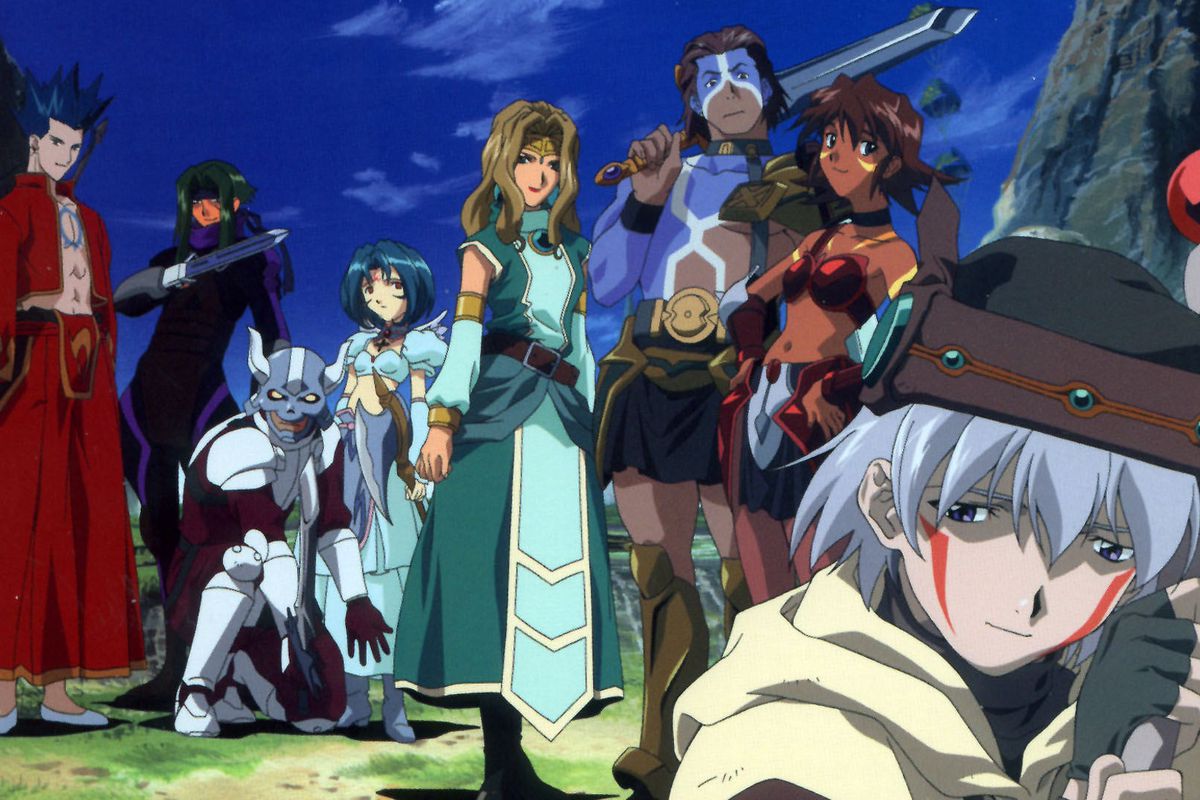
Hack//Sign holds an iconic status in the anime, leaving a lasting imprint on the genre and serving as a source of inspiration for numerous subsequent shows and games. The series revolves around the popular MMO, The World, where Tsukasa finds himself trapped in a dungeon with no recollection of recent events and unable to log out.
It’s a slow-burn mystery, prioritizing dialogue and gradual world-building over action-packed sequences to propel the narrative forward. While the relative absence of combat may deter some viewers, for those who value intricate lore over sword clashes, Hack//Sign is unparalleled in its appeal.
“.hack//Sign” is a Japanese anime series that is part of the larger “.hack” multimedia franchise created by CyberConnect2 and produced by Bee Train. The series aired in Japan from April to September 2002 and has since gained a substantial following for its intricate plot, complex characters, and philosophical themes.
It is set in a fictional MMORPG (Massively Multiplayer Online Role-Playing Game) called “The World” and focuses on the experiences and interactions of players within this virtual realm.
“.hack//Sign” takes place within “The World,” an immensely popular online game that allows players to immerse themselves in a fully realized virtual reality environment. The main story follows Tsukasa, a player who inexplicably finds himself unable to log out of the game. Unlike other players, Tsukasa can feel physical sensations and pain within “The World,” adding to his confusion and fear.
As Tsukasa navigates this new reality, he encounters various other players, each with their own motivations and backgrounds. Key characters include:
Mimiru: A kind and determined player who tries to befriend Tsukasa and help him understand his situation. Bear: An experienced player who acts as a mentor figure, providing guidance and support. BT: A mysterious and somewhat manipulative player with unclear intentions.
Subaru: The leader of the Crimson Knights, a guild dedicated to maintaining order within “The World.” She becomes an important ally to Tsukasa. Sora: A chaotic and mischievous player who enjoys causing trouble and thrives on the chaos within the game.
The overarching narrative of “.hack//Sign” revolves around Tsukasa’s quest to understand his predicament and the nature of “The World.” As the series progresses, it becomes clear that Tsukasa’s condition is linked to a larger mystery involving the game’s enigmatic AI, Aura, and the game’s creator, Harald Hoerwick.
The series goes into the concept of identity, especially in the context of a virtual environment. It explores how players present themselves online versus their real-world personas and how these identities can sometimes blur. Tsukasa’s inability to log out raises questions about the nature of reality and existence within a digital space.
Tsukasa’s isolation within “The World” is a central theme, highlighting his feelings of loneliness and alienation. The series examines how players form connections in virtual spaces, offering both a refuge from and a reflection of their real lives.
Through characters like the Crimson Knights, “.hack//Sign” addresses the ethics of behavior in online environments. The show questions what constitutes right and wrong within the game and how these actions impact the broader community.
Tsukasa’s struggles often mirror issues of mental health, such as depression and anxiety. The series sensitively portrays these challenges, making it a poignant commentary on how virtual spaces can both help and hinder personal well-being.
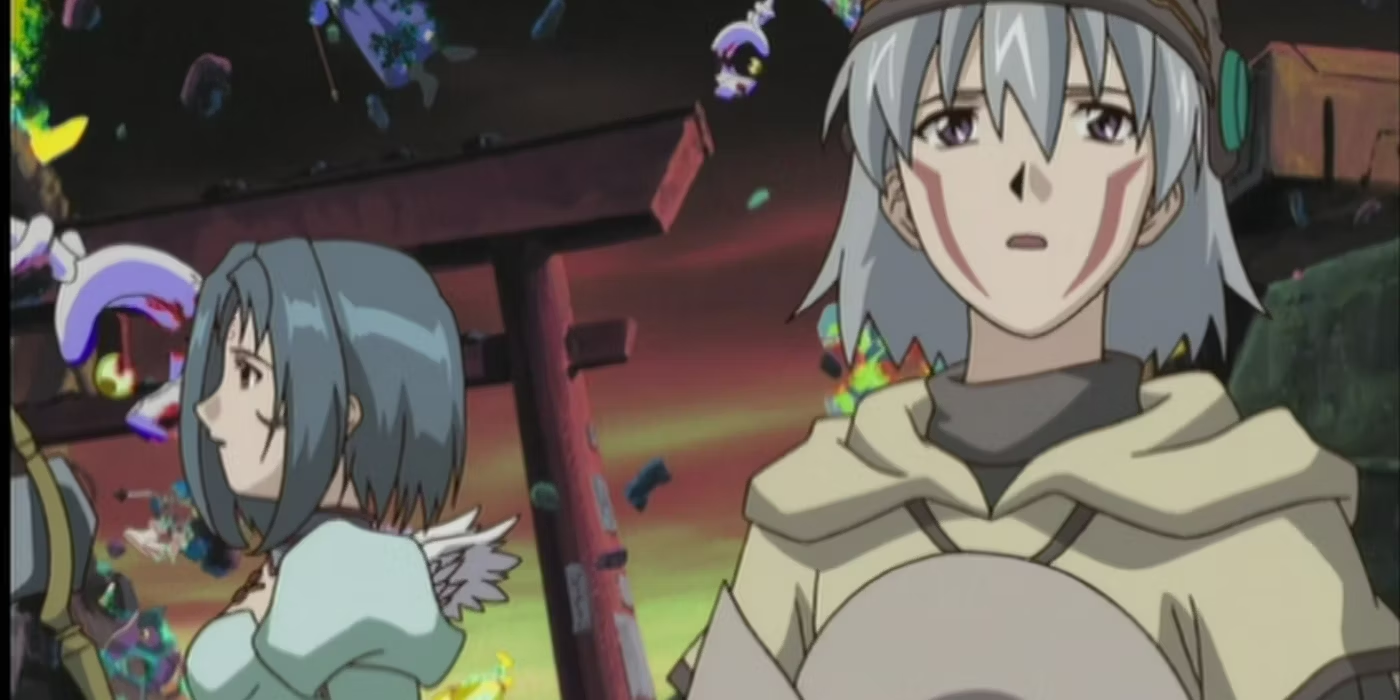
“.hack//Sign” features distinct and atmospheric artwork. The character designs by Yoshiyuki Sadamoto are unique and memorable, contributing to the immersive quality of the series. The animation, while not as fluid as some modern productions, effectively conveys the ethereal and mysterious nature of “The World.”
The series is also notable for its music, composed by Yuki Kajiura. The soundtrack is hauntingly beautiful, with tracks that enhance the emotional and contemplative tone of the story. Songs like “Obsession” and “Yasashii Yoake” (the opening and ending themes, respectively) are particularly memorable and have become iconic among fans.
“.hack//Sign” received mixed to positive reviews upon its release. Critics and audiences praised its complex narrative, character development, and philosophical depth. However, some viewers found the pacing slow and the focus on dialogue-heavy scenes challenging.
Despite these criticisms, “.hack//Sign” has had a lasting impact on the anime and gaming communities. It was one of the first anime series to seriously explore the concept of virtual reality and its implications, paving the way for later works like “Sword Art Online” and “Log Horizon.” Its thoughtful approach to storytelling and character development has earned it a dedicated fan base.
“.hack//Sign” is part of a larger franchise that includes video games, novels, manga, and other anime series. The events of “.hack//Sign” tie into the broader narrative of the .hack universe, particularly the “.hack” video game series for the PlayStation 2. Characters from “.hack//Sign” reappear or are referenced in these other media, creating a rich, interconnected story world.
“.hack//Sign” is a thought-provoking and emotionally resonant series that explores the intersections of reality and virtuality. Its focus on character-driven storytelling and philosophical themes sets it apart from more action-oriented anime, offering a contemplative viewing experience.
While it may not appeal to everyone due to its deliberate pacing and complex narrative, those who appreciate in-depth character studies and thematic richness will find much to admire in “.hack//Sign.” As a pioneering work in the exploration of virtual reality within anime, it remains a significant and influential series.
8. Welcome to the N.H.K
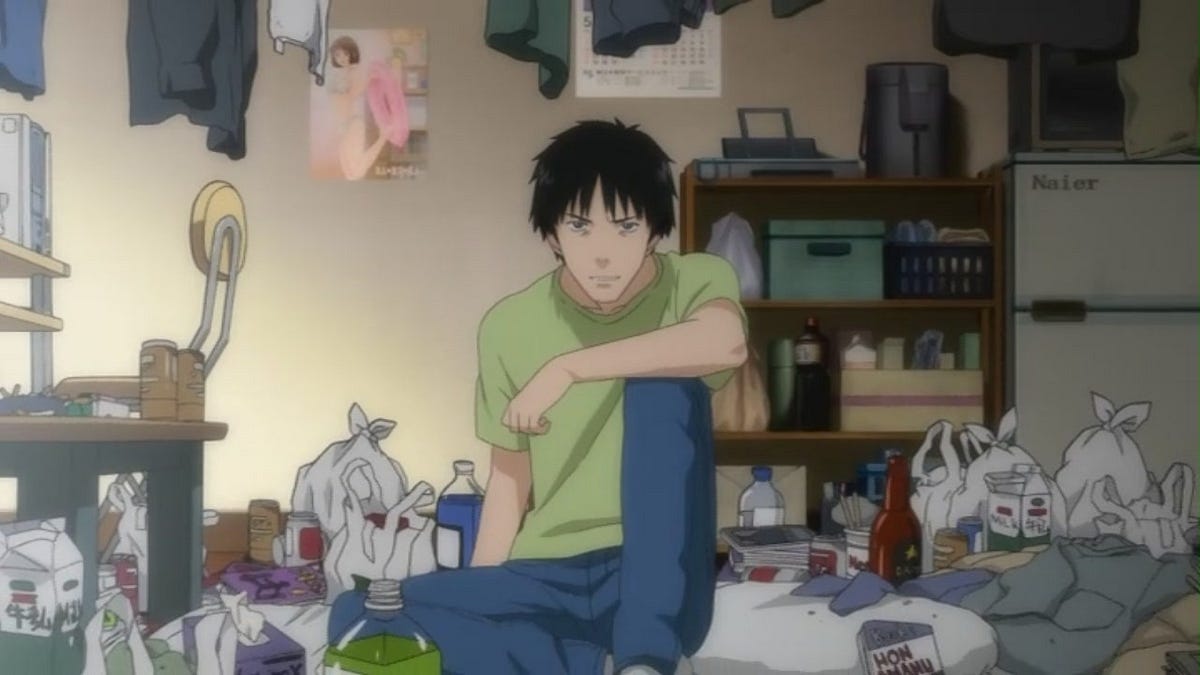
Welcome to the N.H.K. Fearlessly looks into challenging topics. Satou, a hikikomori, is a 22-year-old unemployed college dropout who has retreated entirely from society. His isolated existence is disrupted when he encounters a young woman who claims she can cure him of his hikikomori lifestyle.
Satou, however, insists that a conspiracy is responsible for his situation, and themes like loneliness, social isolation, and suicide take center stage. While the series could easily be hailed as one of the greatest slice-of-life anime, it takes a unique turn when Satou is coerced into becoming the writer for a gal game developed by his neighbor.
Here, Welcome to the N.H.K. morphs into a game development anime, albeit one with a vastly different approach than New Game! The focus here lies more on the psychological aspects of the game makers rather than the technicalities of development.
“Welcome to the N.H.K.” is a Japanese novel written by Tatsuhiko Takimoto, which has been adapted into a manga illustrated by Kendi Oiwa and a 24-episode anime series directed by Yusuke Yamamoto.
The series goes deeply into the themes of social isolation, mental health, and the challenges of modern life, particularly in the context of Japanese society. It is a dark comedy-drama that combines elements of satire, psychological analysis, and heartfelt storytelling.
The story centers around Tatsuhiro Satou, a 22-year-old hikikomori (a recluse who has withdrawn from social life) who believes in a variety of conspiracy theories, including one that a secret organization called the N.H.K. (Nihon Hikikomori Kyokai) is responsible for creating and perpetuating hikikomori. He spends his days in isolation, avoiding the outside world and sustaining himself on minimal means.
Satou’s life takes a turn when he meets Misaki Nakahara, a mysterious young girl who claims to have a plan to cure him of his hikikomori ways. Misaki makes a contract with Satou, promising to help him re-enter society through nightly counseling sessions in the park. Alongside this central plot, the series also goes into the lives of Satou’s friends and acquaintances, including:
Kaoru Yamazaki: Satou’s otaku neighbor and former high school classmate, who dreams of creating his own erotic video game. Yamazaki provides a blend of comic relief and poignant moments as he deals with his own struggles.
Hitomi Kashiwa: Satou’s senior from high school who also believes in various conspiracy theories. Her interactions with Satou reveal much about his past and the roots of his current condition.
Megumi Kobayashi: A former classmate of Satou and Yamazaki, who becomes involved in a multi-level marketing scheme, adding another layer of complexity to the narrative.
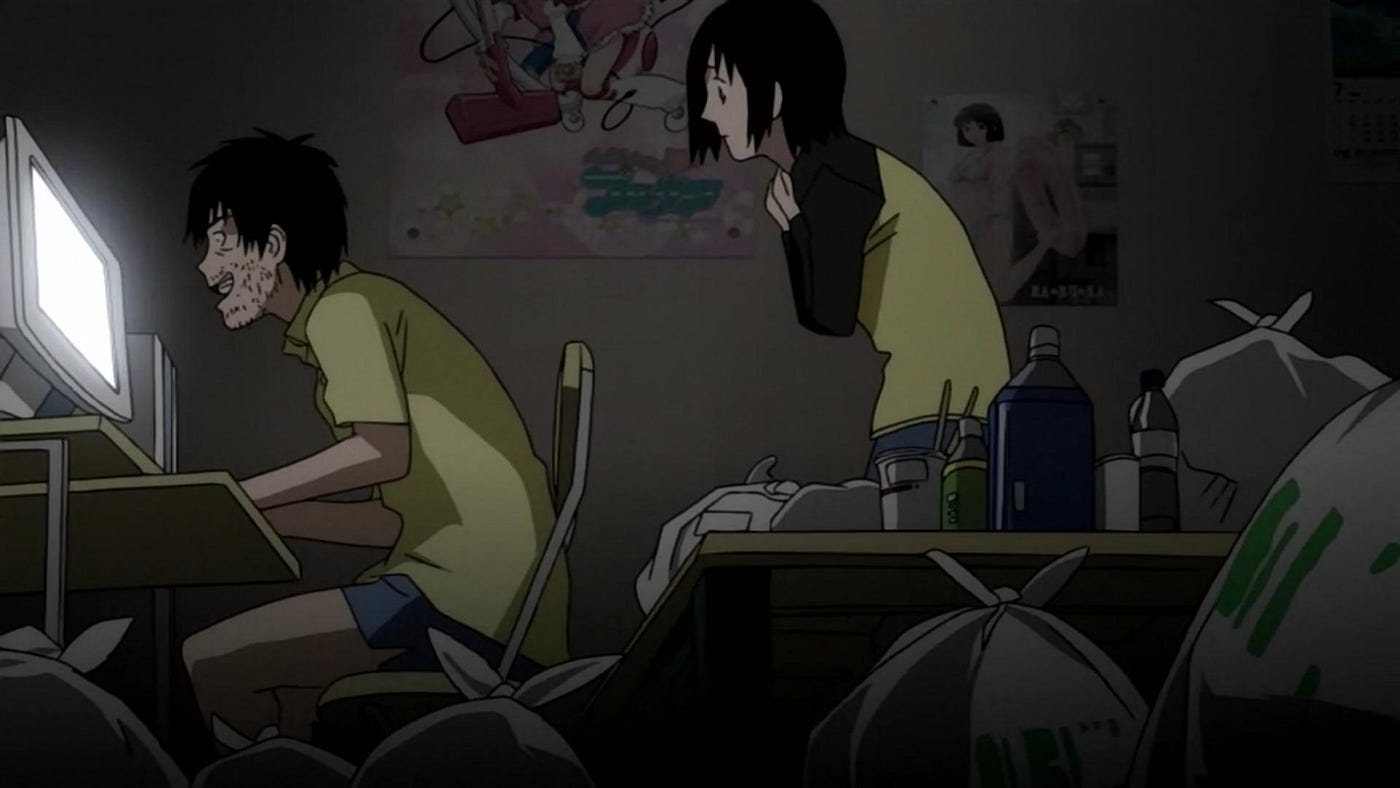
The series provides a stark look at the phenomenon of hikikomori, exploring its causes, such as societal pressure, personal failure, and mental health issues. Satou’s journey is a portrayal of the difficulties faced by those who withdraw from society and the long road to recovery.
Welcome to the N.H.K. tackles mental health issues head-on, including depression, anxiety, and delusional thinking. Satou’s paranoia about the N.H.K. and his interactions with other characters highlight various mental health struggles and the impact they have on individuals and their relationships.
The series critiques modern society, particularly the pressures and expectations placed on young people. It addresses issues like the obsession with success, the impact of media and technology, and the often overwhelming demands of contemporary life.
Despite its dark themes, the story is ultimately about human connection and the possibility of redemption. Misaki’s interactions with Satou, although complicated, underscore the importance of empathy, understanding, and support in overcoming personal demons.
The series employs dark comedy and satire to tackle its heavy themes. It uses humor to provide relief and to critique societal norms, making it both entertaining and thought-provoking.
The anime adaptation of “Welcome to the N.H.K.” is known for its distinctive art style, which complements the series’ themes. The character designs are expressive, capturing the nuances of their psychological states. The animation effectively conveys the contrasts between Satou’s internal world and the reality around him, often using visual metaphors to illustrate his mental state.
The use of color and lighting is notable, with darker tones dominating scenes depicting Satou’s isolation and brighter hues appearing in moments of hope or connection. The direction by Yusuke Yamamoto ensures that the pacing balances the dark and comedic elements, maintaining engagement while delving deep into serious issues.
The soundtrack, composed by the Japanese rock band Pearl Brothers, along with the opening theme “Puzzle” by Round Table featuring Nino and the ending theme “Odoru Akachan Ningen” by Kenji Ohtsuki and Fumihiko Kitsu, adds to the series’ unique atmosphere. The music ranges from upbeat and quirky to melancholic, reflecting the series’ emotional range.
“Welcome to the N.H.K.” has been well-received for its bold and unflinching portrayal of mental health issues and social isolation. Critics and audiences have praised its depth, character development, and the balance of humor and drama. The series has sparked discussions about hikikomori and mental health, shedding light on issues often stigmatized or overlooked in society.
The novel, manga, and anime each offer slightly different experiences, with the novel providing a more introspective and darker view of Satou’s mind, the manga offering detailed visual storytelling, and the anime striking a balance between the two with its engaging presentation and musical score.
“Welcome to the N.H.K.” is a compelling and thought-provoking series that tackles the difficult themes of social isolation, mental health, and societal pressure with a blend of dark humor and heartfelt drama. Its portrayal of hikikomori and the challenges of modern life resonates with many, making it a significant work in both anime and literature.
The series’ ability to provoke thought while providing an engaging and often entertaining narrative ensures its place as a standout story that continues to impact and inspire discussions on mental health and societal expectations.
7. Hi Score Girl
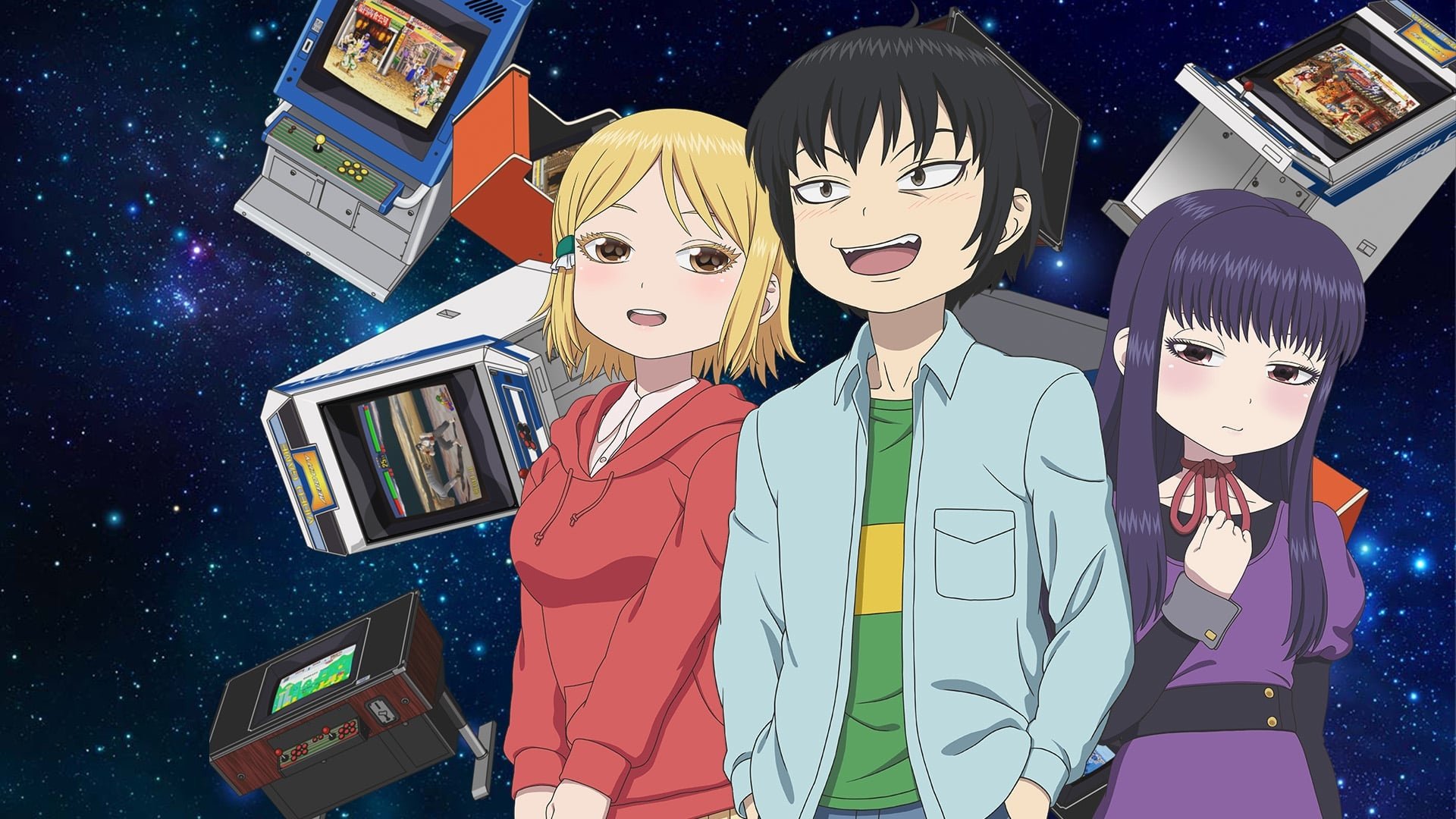
Don’t let its CG visuals deter you—Hi Score Girl is a delightful gem. Overflowing with video game references and nostalgic nods to the ’90s gaming scene, the anime follows Haruo, a boy who continually finds himself unable to defeat Akira in any arcade game. Despite their initial rivalry, the two gradually form a closer bond, though their paths eventually diverge.
Spanning a significant time period, Hi Score Girl skillfully chronicles the growth of its characters while also offering insights into the evolution of the gaming industry. It’s a journey that not only captures the essence of gaming culture but also resonates with themes of friendship and personal development.
“Hi Score Girl,” known as “High Score Girl” in English, is a Japanese manga series written and illustrated by Rensuke Oshikiri. The series was serialized in Square Enix’s Monthly Big Gangan magazine from 2010 to 2018 and has been adapted into an anime series produced by J.C. Staff and aired from 2018 to 2019.
“Hi Score Girl” is a nostalgic love letter to the golden age of arcade gaming in the 1990s and explores themes of friendship, rivalry, and coming-of-age, all against the backdrop of the rapidly evolving video game industry.
The story of “Hi Score Girl” begins in 1991 and follows the life of Haruo Yaguchi, a sixth-grader who is obsessed with arcade games. Haruo is not particularly good at anything else, whether it be academics or sports, but he finds solace and pride in his gaming skills.
His life takes an unexpected turn when he meets Akira Oono, a rich and seemingly perfect classmate who turns out to be a gaming prodigy, consistently outperforming Haruo in every game they play.
Despite their contrasting backgrounds and Haruo’s initial resentment, a unique friendship blossoms between Haruo and Akira. The series follows their relationship as they grow up, spanning from elementary school to high school, and explores how their bond evolves alongside their love for video games.
Haruo Yaguchi: The protagonist, an avid gamer whose life revolves around arcade games. He is determined, passionate, and somewhat oblivious to social cues, but his dedication to gaming and his growing understanding of his feelings make him a compelling character.
Akira Oono: A quiet and enigmatic girl from a wealthy family, Akira is a gaming genius who finds an escape from her strict upbringing through video games. Her non-verbal communication and intense gaming skills contrast with her outwardly delicate appearance.
Koharu Hidaka: Another important character who develops feelings for Haruo. Initially introduced as a rival, she becomes an essential part of the story, representing the emotional complexities of growing up and unrequited love.
The series is a treasure trove of references to classic arcade games like “Street Fighter II,” “Final Fight,” and many others. It meticulously recreates the arcade culture of the 1990s, capturing the excitement, competitiveness, and community spirit that defined that era.
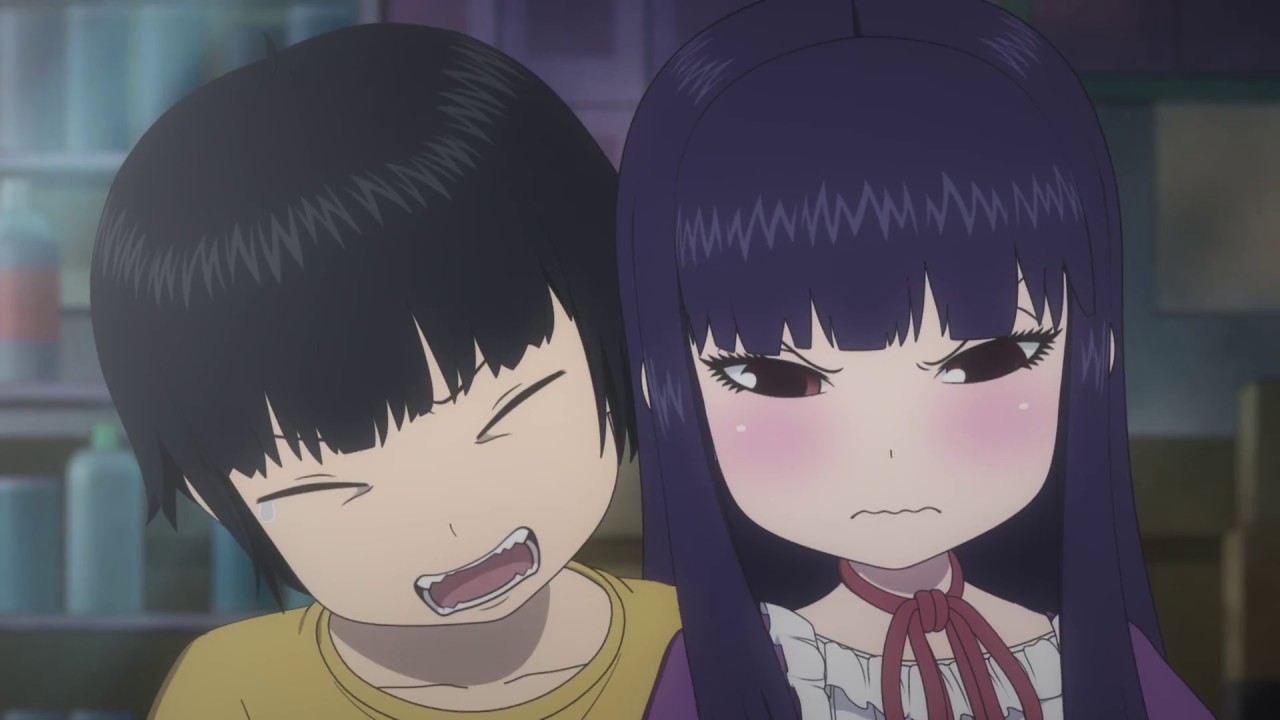
At its core, “Hi Score Girl” is a coming-of-age story. It follows Haruo, Akira, and Koharu as they navigate the challenges of adolescence, personal growth, and the complexities of relationships. The series portrays the bittersweet nature of growing up, the pain of unrequited love, and the joy of finding one’s passion.
The dynamic between Haruo and Akira is central to the narrative. Their rivalry in games fosters a deep bond that transcends their differences. Koharu’s addition to the mix brings further depth to the story, highlighting the multifaceted nature of friendships and competition.
For both Haruo and Akira, video games are more than just a hobby; they are a means of escape from their respective challenges. The series delicately explores how gaming serves as a coping mechanism and a source of solace and empowerment for them.
The art style of “Hi Score Girl” is distinctive, with a blend of detailed character designs and a faithful recreation of arcade game graphics. The manga’s artwork effectively captures the retro aesthetic of the 1990s, and the anime adaptation brings this to life with vibrant animation and dynamic gaming sequences.
The use of 3D animation for the gaming scenes in the anime is particularly noteworthy. These scenes are animated to mimic the look and feel of classic arcade games, providing an immersive experience for viewers. The character animations are expressive, effectively conveying the emotions and personalities of the characters.
The soundtrack of the anime is another highlight, featuring a mix of nostalgic tracks that enhance the period setting and the emotional tone of the series. The opening theme “New Stranger” by Sora Tob Sakana and the ending theme “Houkago Distraction” by Etsuko Yakushimaru perfectly capture the nostalgic and introspective atmosphere of the show.
“Hi Score Girl” has been well-received by both critics and audiences. Its authentic portrayal of the 1990s arcade gaming culture, combined with its heartfelt storytelling and character development, has resonated with many viewers. The series has been praised for its humor, emotional depth, and the seamless integration of gaming history into the narrative.
The manga received the 2013 Comic Natalie Grand Prize and was nominated for the 6th Manga Taishō Awards. The anime adaptation further boosted the series’ popularity, leading to a second season and additional OVA episodes.
“Hi Score Girl” is a nice and nostalgic journey through the world of 1990s arcade gaming, enriched by a heartfelt coming-of-age story. Its exploration of friendship, rivalry, and personal growth, set against the backdrop of a rapidly evolving gaming industry, makes it a unique and memorable series.
Whether you are a long-time gamer who lived through the golden age of arcades or a newcomer to the world of retro gaming, “Hi Score Girl” offers a poignant and entertaining experience that celebrates the enduring impact of video games on our lives.
6. Bofuri: I Don’t Want to Get Hurt, So I’ll Max Out My Defense
Sometimes, an anime’s title says it all. In Bofuri: I Don’t Want to Get Hurt, So I’ll Max Out My Defense, Maple embraces her title’s sentiment within NewWorld Online, a virtual reality MMORPG.
As a shield-user, Maple allocates all her points to defense as she levels up, enabling her to survive against seemingly insurmountable challenges. Through her unconventional strategy and quick thinking, she ascends the game’s ranks, showcasing the anime’s profound understanding and affection for MMORPGs.
“Bofuri: I Don’t Want to Get Hurt, So I’ll Max Out My Defense” is a Japanese light novel series written by Yuumikan and illustrated by Koin. It has been adapted into a manga series and an anime television series. The anime adaptation aired from January to March 2020 and was produced by Silver Link studio.
Bofuri is a delightful blend of comedy, action, and adventure set in virtual reality MMORPGs (Massively Multiplayer Online Role-Playing Games).
The story follows Kaede Honjou, a newcomer to the world of online gaming, who decides to try out the virtual reality MMORPG “NewWorld Online” at the recommendation of her friend. Wanting to avoid getting hurt in the game, Kaede chooses to max out her defense stat, creating a character named Maple who is virtually invulnerable but lacking in offensive capabilities.
However, Maple’s unconventional build and unorthodox playstyle lead her to unexpected success as she inadvertently becomes one of the most powerful players in the game. Alongside her friend Risa, who plays as the character Sally, Maple goes on a series of adventures, exploring the game world, participating in events, and encountering various challenges and adversaries.
Maple (Kaede Honjou): The protagonist of the series, Maple is a newcomer to online gaming who chooses to focus entirely on defense to avoid getting hurt. Her cautious and defensive playstyle leads to her becoming an unintentional powerhouse in the game. Maple is cheerful, kind-hearted, and somewhat naïve, but she possesses a keen strategic mind and a knack for turning disadvantages into advantages.
Sally (Risa Shiramine): Maple’s friend and fellow player, Sally plays as a rogue character with high agility and offensive capabilities. She serves as Maple’s guide and partner in their adventures, providing support and advice while occasionally getting exasperated by Maple’s unconventional methods.
Kasumi (Kasumi Shiramine): Another friend of Maple and Sally, Kasumi is a skilled player who joins their party later in the series. She is calm, composed, and highly analytical, serving as a foil to Maple’s more impulsive nature.
Kuromu (Yui): A mysterious NPC (Non-Player Character) who becomes Maple’s pet after she befriends him in the game. Kuromu is a powerful creature with unique abilities, and he forms a close bond with Maple as they journey together.
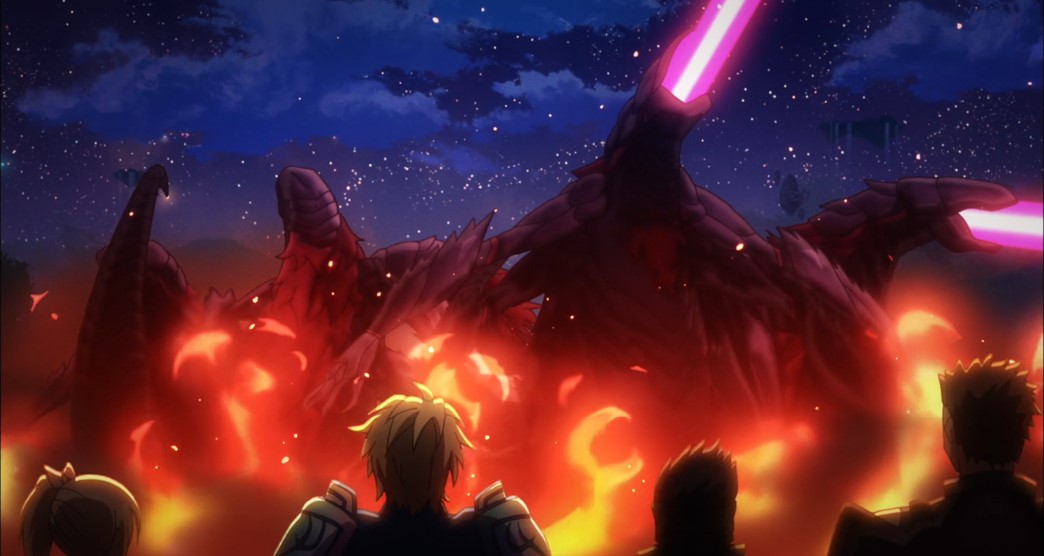
As the story unfolds, the focus shifts to Maple’s exploits in breaking the MMO’s rules and mechanics, prompting developers to resort to increasingly desperate measures to rein her in. This progression adds layers of intrigue and excitement to the narrative, keeping viewers eagerly anticipating Maple’s next move.
Bofuri subverts typical MMORPG tropes by featuring a protagonist who prioritizes defense over offense. Maple’s unique playstyle leads to a series of humorous and unexpected situations as she unwittingly becomes a legend in the game world.
Central to the series is the theme of friendship and teamwork. Maple’s bond with Sally and Kasumi serves as the emotional core of the story, highlighting the importance of collaboration and support in overcoming challenges.
Bofuri captures the sense of wonder and exploration inherent in MMORPGs as Maple and her friends journey through the game world, discovering new locations, encountering powerful monsters, and participating in epic battles.
Maple’s success in the game is partly attributed to her creativity and willingness to think outside the box. Her ability to come up with unconventional strategies and tactics demonstrates the power of imagination in overcoming obstacles.
The anime adaptation of “Bofuri” features vibrant and colorful animation that brings the game world to life. The character designs are charming and expressive, capturing the personalities of the protagonists as well as the diverse array of creatures and NPCs they encounter.
The action sequences are dynamic and well-animated, showcasing Maple’s impressive defensive abilities and the creativity of her tactics. The use of special effects and visual flourishes enhances the excitement of the battles and adds to the overall enjoyment of the series.
The soundtrack features upbeat and energetic music that complements the adventurous tone of the story. The opening theme “Kyūkyoku Unbalance!” by Afilia Saga and the ending theme “Play the World” by Rico Sasaki perfectly capture the spirit of exploration and discovery in the game world.
“Bofuri: I Don’t Want to Get Hurt, So I’ll Max Out My Defense” has been well-received by audiences for its lighthearted humor, charming characters, and imaginative premise. It has gained a dedicated fanbase and has been praised for its refreshing take on the MMORPG genre.
The anime adaptation has been particularly successful, with viewers appreciating its colorful animation, engaging action scenes, and endearing character interactions. It has spawned merchandise, and spin off manga, and a second season has been announced, further solidifying its popularity.
“Bofuri: I Don’t Want to Get Hurt, So I’ll Max Out My Defense” is a delightful and entertaining series that offers a fresh twist on the MMORPG genre. With its lovable characters, humorous antics, and exciting adventures, it appeals to fans of gaming and fantasy alike.
Whether you’re a seasoned gamer or new to the world of virtual reality, “Bofuri” offers a fun and enjoyable experience that will leave you eagerly awaiting the next adventure with Maple.
5. Recovery of an MMO Junkie
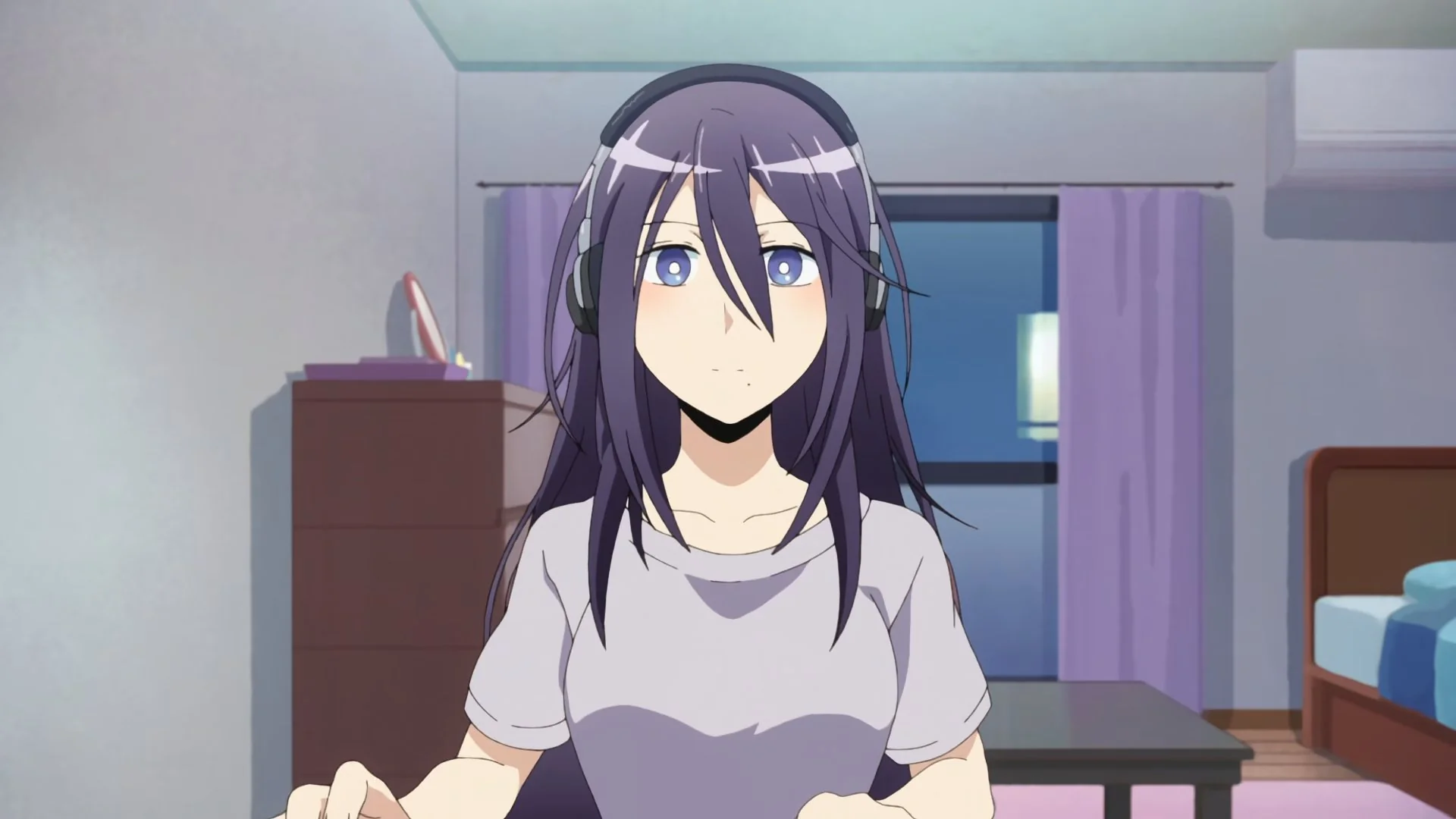
Since the era of EverQuest and Ultima Online, MMO addiction has been a genuine and concerning issue. Immersion doesn’t necessarily hinge on cutting-edge graphics, and some individuals swiftly find themselves ensnared by their virtual pastime, prioritizing the virtual world over reality.
Recovery of an MMO Junkie directly addresses this phenomenon. Thankfully, it approaches the topic with humor and a light-hearted touch rather than a heavy-handed one. The series follows a woman attempting to strike a balance between paying bills and indulging in her favorite game. While it may tackle a niche subject within an already niche subgenre, Recovery of an MMO Junkie executes it flawlessly.
“Recovery of an MMO Junkie” is a heartwarming romantic comedy anime series that aired in 2017, based on the Japanese web manga series written and illustrated by Rin Kokuyo. The anime adaptation was produced by Signal.MD studio and directed by Kazuyoshi Yaginuma. It garnered widespread acclaim for its unique premise, endearing characters, and thoughtful exploration of relationships in the context of online gaming.
The series follows the life of 30-year-old Moriko Morioka, who decides to quit her job as an office worker and become a NEET (Not in Education, Employment, or Training). Seeking solace and a fresh start, Moriko immerses herself in online gaming under the username “Hayashi.” In the MMORPG game “Fruits de Mer,” she creates a male character and goes on a new virtual life.
In the game, Moriko encounters a friendly female player named Lily, with whom she forms a close friendship. As Hayashi, Moriko also meets a helpful male player named Lily, leading to a blossoming online relationship. However, Moriko remains unaware that Lily and Lily are actually the same person: a handsome and kind-hearted office worker named Yuta Sakurai.
The series follows Moriko’s journey of self-discovery and her evolving relationship with Yuta, both online and offline, as they navigate the challenges of adulthood, social anxiety, and the blurred lines between virtual reality and real life.
Moriko Morioka (Hayashi): The protagonist of the series, Moriko is a 30-year-old NEET who finds comfort and escape in online gaming. As Hayashi, she adopts a male persona and gradually becomes more confident and outgoing in the virtual world.
Yuta Sakurai (Lily): A handsome and kind-hearted office worker who plays as Lily in the game “Fruits de Mer.” Yuta forms a connection with Moriko online and struggles with his feelings for her while maintaining his secret identity.
Homare Koiwai: Yuta’s outgoing and supportive colleague, who serves as a mentor and friend to Moriko in real life. Koiwai encourages Moriko to step out of her comfort zone and pursue her interests.
Kazuomi Fujimoto (Pokotarou): Another player in “Fruits de Mer” who forms a friendship with Moriko online. Pokotarou serves as a comedic foil to Moriko’s antics and provides humorous moments throughout the series.
Recovery of an MMO Junkie explores the dynamics of online relationships and the connections formed through virtual interactions. It examines how friendships and romances can develop and flourish in the digital realm, blurring the boundaries between fantasy and reality.
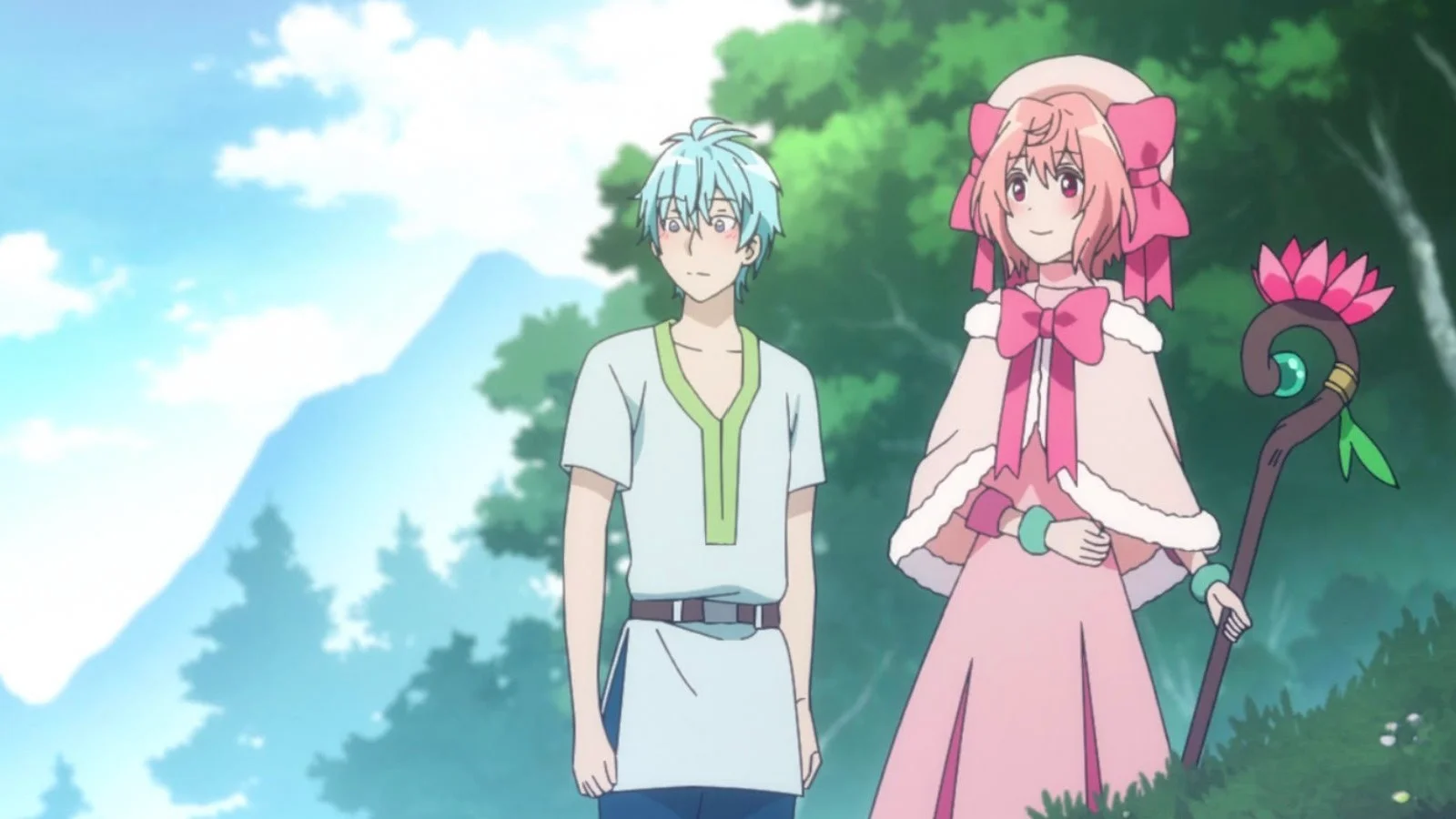
The series goes into themes of identity and self-discovery as Moriko navigates her virtual and real-life personas. Through her experiences in the game and her interactions with Yuta, Moriko learns to embrace her true self and confront her insecurities.
Moriko’s decision to become a NEET reflects her struggles with social anxiety and the pressures of adulthood. The series sensitively portrays her journey of overcoming her fears and finding her place in the world, offering a relatable and empathetic portrayal of mental health issues.
At its core, “Recovery of an MMO Junkie” is a romantic comedy that delights in the awkward and endearing moments of Moriko and Yuta’s budding relationship. The series balances humor, romance, and drama, creating a charming and uplifting narrative that resonates with viewers.
The anime features clean and expressive character designs that bring the cast to life. The animation is fluid and vibrant, capturing both the excitement of online gaming and the quiet moments of introspection between characters. The use of color and lighting effectively conveys the mood and tone of each scene, whether it be the warmth of a budding romance or the whimsy of a virtual adventure.
The soundtrack complements the series perfectly, with cheerful and uplifting melodies that enhance the emotional impact of key moments. The opening theme “Saturday Night Question” by Megumi Nakajima and the ending theme “Hikari, Hikari” by Yuuka Aisaka capture the spirit of the series and leave a lasting impression on viewers.
“Recovery of an MMO Junkie” received widespread praise from critics and audiences alike for its charming characters, relatable storylines, and thoughtful exploration of online relationships. It struck a chord with viewers who appreciated its mature and nuanced portrayal of adult themes, as well as its positive representation of female gamers.
The series has gained a dedicated fanbase and has been credited with sparking discussions about mental health, social anxiety, and the power of online communities. It has inspired fan art, cosplay, and merchandise, further cementing its status as a beloved and influential anime.
“Recovery of an MMO Junkie” is a delightful and heartwarming series that offers a refreshing take on the romantic comedy genre. With its endearing characters, relatable themes, and engaging storyline, it resonates with viewers of all ages and backgrounds. Whether you’re a fan of online gaming or simply enjoy a good love story, “Recovery of an MMO Junkie” is sure to grab your heart and leave you smiling long after the credits roll.
4. My Love Story with Yamada-kun at Lv999

My Love Story with Yamada-kun at Lv999 revolves around Akane, who initially joins an MMO at her boyfriend’s urging. However, when he unexpectedly ends their relationship, Akane sinks into despair. In her darkest moments, she encounters Yamada, one of the game’s top players, and finds solace in joining his guild, forming new connections along the way.
While the anime doesn’t extensively showcase the MMO, Forest of Savior, it remains integral to Akane’s journey, serving as a catalyst for her emotional recovery and deepening her bond with Yamada. Beyond its gaming aspect, the series unfolds as a charming romantic comedy filled with heartwarming moments.
“Loving Yamada at Lv999” is a light novel series written by Mita Nazuki and illustrated by Yasumo. The series has also been adapted into a manga with art by Chika Tojo. Set in a virtual reality MMORPG (Massively Multiplayer Online Role-Playing Game), the story follows the adventures of a high-level player named Haruto Amakawa as he unexpectedly finds himself partnered with a low-level player named Nozomi Katakura, leading to a series of humorous and heartwarming encounters.
In “Loving Yamada at Lv999,” the protagonist Haruto Amakawa is a seasoned player in the MMORPG “Exodia Exodus,” known for his high level and exceptional skills. However, Haruto’s solitary gaming lifestyle is disrupted when he encounters Nozomi Katakura, a low-level player struggling to survive in the game. Despite their stark differences in level and experience, Haruto finds himself drawn to Nozomi’s cheerful and determined personality.
As Haruto and Nozomi go on adventures together in “Exodia Exodus,” they form an unlikely partnership and friendship. Along the way, they encounter various challenges, including powerful monsters, rival players, and the mysteries of the game world itself. Through their shared experiences and interactions with other players, Haruto and Nozomi grow closer and learn valuable lessons about teamwork, friendship, and the true meaning of adventure.
Haruto Amakawa: The protagonist of the series, Haruto is a high-level player in “Exodia Exodus” known as Yamada. He is skilled, experienced, and somewhat aloof, preferring to play solo and avoid unnecessary interactions with other players. However, his encounter with Nozomi sparks a change in him, leading him to reassess his priorities and embrace the joys of companionship and teamwork.
Nozomi Katakura: A low-level player in “Exodia Exodus” who forms an unlikely partnership with Haruto. Nozomi is optimistic, determined, and eager to improve her skills in the game. Despite facing numerous challenges and setbacks, she never loses her cheerful demeanor and unwavering resolve, inspiring those around her with her positivity and determination.
At its core, “Loving Yamada at Lv999” is a story about friendship and companionship. Haruto and Nozomi’s partnership demonstrates the power of teamwork and mutual support, as they overcome obstacles and grow stronger together. The series emphasizes the importance of forming meaningful connections with others, both in the virtual world and in real life.
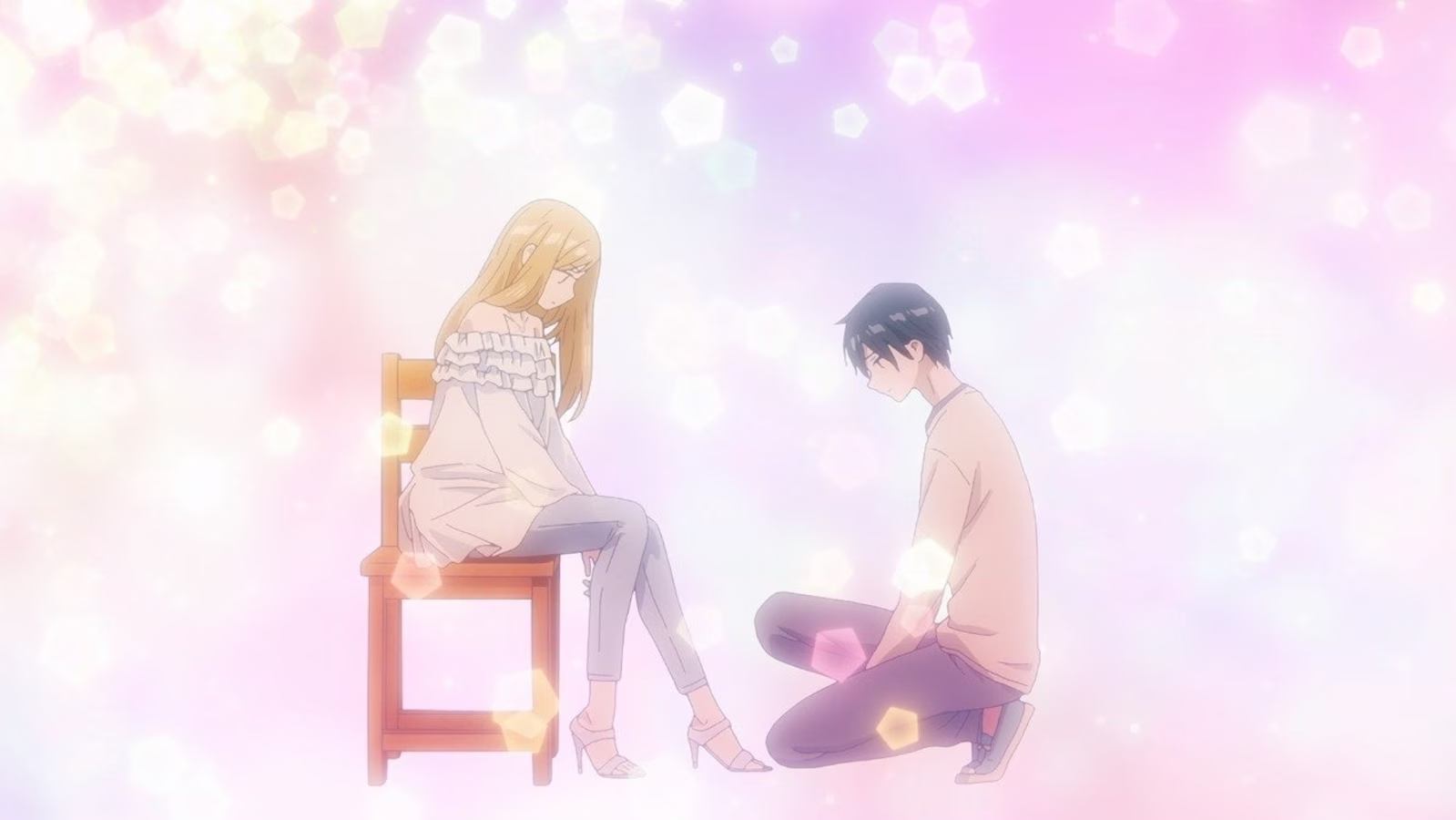
Set in the expansive and immersive world of “Exodia Exodus,” the series captures the thrill of adventure and exploration inherent in MMORPGs. Haruto and Nozomi’s journey takes them to diverse locations, from lush forests to treacherous dungeons, as they seek out new challenges and discoveries. The sense of wonder and excitement in their adventures adds depth and richness to the story.
Through their experiences in “Exodia Exodus,” both Haruto and Nozomi undergo personal growth and self-discovery. Haruto learns to open up and trust others, while Nozomi gains confidence and resilience as she faces adversity and overcomes obstacles. The series highlights the transformative power of stepping outside one’s comfort zone and embracing new opportunities for growth and development.
The artwork in the manga adaptation of “Loving Yamada at Lv999” is colorful, dynamic, and visually appealing. The character designs are expressive and distinctive, capturing the personalities of the protagonists as well as the diverse array of creatures and environments they encounter in the game world. The action scenes are well-choreographed and exciting, drawing readers into the heart of the action.
The manga’s panel layout and pacing effectively convey the sense of adventure and excitement in the story, with dynamic compositions and fluid transitions between scenes. The use of visual effects and sound effects enhances the immersive experience, adding depth and intensity to the action sequences.
“Loving Yamada at Lv999” has garnered positive reviews from readers for its engaging storyline, likable characters, and immersive world-building. Fans praise the series for its humor, heartwarming moments, and relatable themes of friendship and adventure. The manga has gained a dedicated following and has been praised for its creative premise and strong execution.
While “Loving Yamada at Lv999” may not be as widely known as some other MMORPG-themed series, it has earned a reputation as an enjoyable and entertaining read for fans of the genre. With its charming characters, exciting adventures, and heartfelt themes, it offers a refreshing take on the world of virtual reality gaming and the bonds forged within it.
“Loving Yamada at Lv999” is a delightful and heartwarming manga series that combines humor, adventure, and friendship in the vibrant world of an MMORPG. Through the unlikely partnership of Haruto and Nozomi, the series explores themes of teamwork, self-discovery, and the transformative power of friendship.
With its engaging storyline, appealing artwork, and relatable characters, “Loving Yamada at Lv999” offers an enjoyable and uplifting reading experience for fans of gaming-themed manga.
3. No Game No Life
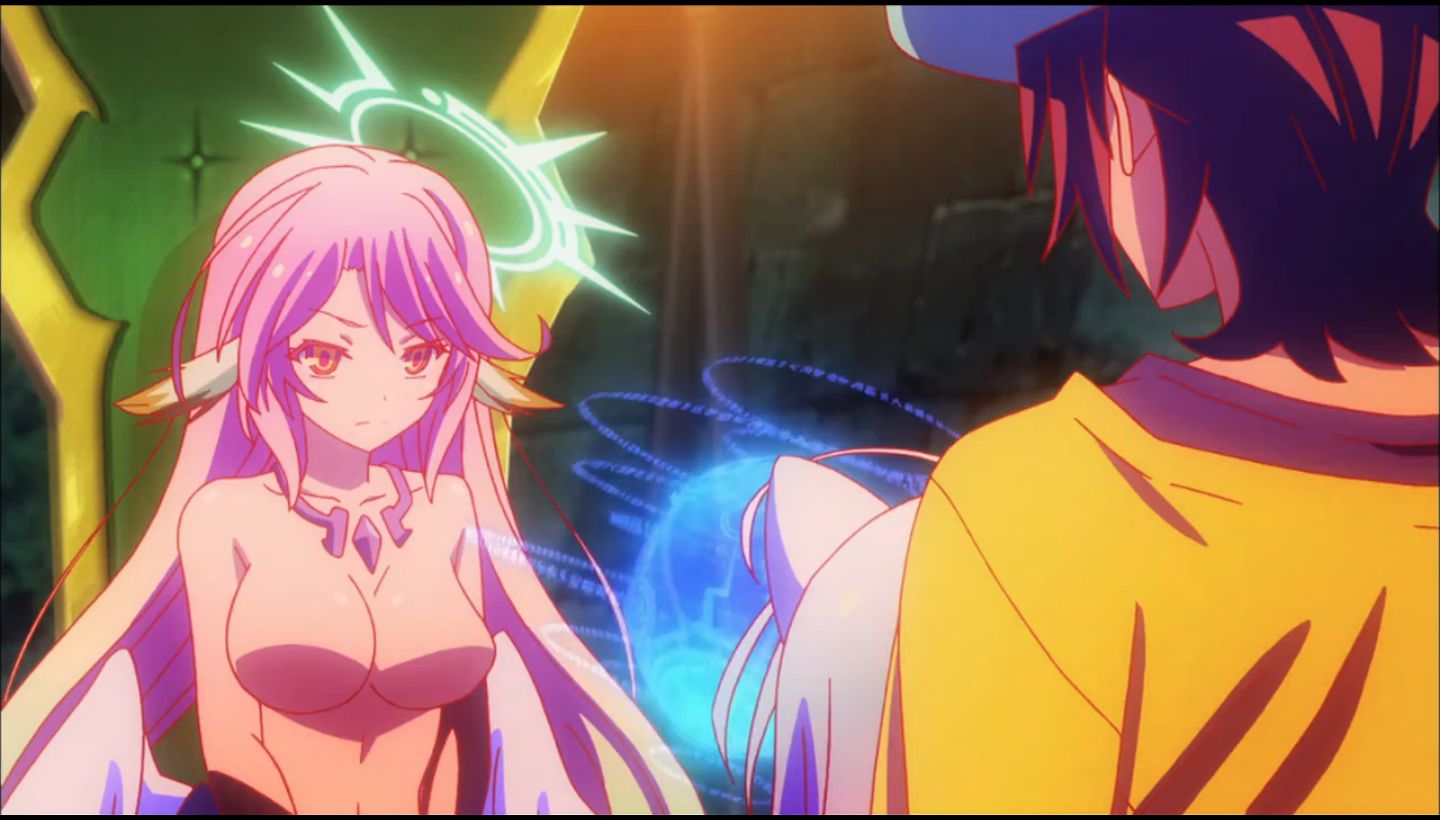
In the real world, gamers who excel to the highest echelons of skill often become esports professionals, competing in tournaments against other elite teams for lucrative cash prizes.
No Game No Life takes a unique spin on this concept, showcasing that there’s more to gamer prowess than mere cash battles. Sora and Shiro, undefeated gamers, catch the eye of a god, who transports them to a world where games determine everything.
In this isekai game anime, the duo’s skills are put to the test repeatedly, with stakes beyond their wildest imagination. No Game No Life offers a humorous and endearing portrayal of gaming culture and the gamers themselves.
“No Game No Life” is a Japanese light novel series written and illustrated by Yuu Kamiya. The series has been adapted into a manga and a highly acclaimed anime television series. Set in a fantasy world governed by games, “No Game No Life” follows the adventures of two brilliant siblings, Sora and Shiro, as they aim to conquer the world through strategic gaming.
In “No Game No Life,” conflicts are resolved not through violence, but through games of all kinds, from chess to video games. Sora and Shiro, a brother-sister duo known as “Blank” due to their unbeatable gaming skills, are summoned to the world of Disboard, where everything is determined by games. Determined to rise to the top of this new world, Sora and Shiro set out to challenge the god of games, Tet, and claim the throne of the One True God.
Throughout their journey, Sora and Shiro form alliances, confront powerful opponents, and outwit cunning adversaries, all while adhering to their own strict code of ethics and striving to create a world where games reign supreme. Along the way, they encounter colorful characters, reveal mysteries, and uncover the secrets of Disboard.

Sora: The older brother of the sibling duo and the strategist of “Blank.” Sora is confident, charismatic, and highly intelligent, with a knack for reading his opponents and devising elaborate gaming strategies. Despite his outward bravado, Sora deeply cares for his sister and will go to great lengths to protect her.
Shiro: The younger sister of “Blank” and the mastermind behind their gaming prowess. Shiro is a genius-level intellect with exceptional analytical skills and memory. Despite her quiet demeanor and social awkwardness, Shiro is fiercely loyal to her brother and serves as the brains behind their operations.
Stephanie Dola: The granddaughter of the deceased king of Imanity, the weakest of the sixteen races in Disboard. Stephanie initially serves as a foil to Sora and Shiro, but she gradually becomes an ally and friend as the series progresses. Despite her initial naivety and lack of gaming skills, Stephanie proves to be resourceful and determined in her own right.
At its core, “No Game No Life” is a celebration of gaming and strategy. The series explores the complexities of various games, from chess to card games to video games, and showcases the brilliance and creativity of Sora and Shiro as they outmaneuver their opponents. The elaborate gaming matches are not only thrilling to watch but also serve as a vehicle for character development and thematic exploration.
The bond between Sora and Shiro is central to the series, highlighting the power of sibling love and teamwork. Their unwavering trust in each other and their shared goal of conquering Disboard drive the narrative forward and provide emotional depth to the story. Additionally, the series explores themes of friendship and camaraderie through the alliances forged by Sora and Shiro with other characters.

Despite their desire to win, Sora and Shiro adhere to their own moral code and principles. They refuse to cheat or harm others unnecessarily, and they often use their victories to improve the lives of those around them. The series raises thought-provoking questions about the nature of competition, ethics, and the balance between winning and doing what is right.
The anime adaptation of “No Game No Life” is visually stunning, with vibrant colors, fluid animation, and intricate character designs. The fantastical world of Disboard is brought to life with breathtaking surfaces, imaginative creatures, and elaborate gaming arenas. The character animations are expressive and dynamic, conveying the emotions and personalities of the protagonists as well as the intensity of their gaming matches.
The use of visual effects, such as dramatic camera angles and stylized imagery, enhances the overall impact of the series and immerses viewers in Disboard. The soundtrack, composed by Super Sweep, complements the action on screen with energetic and atmospheric music that sets the tone for each scene.
“No Game No Life” has garnered widespread acclaim from both critics and audiences for its clever premise, engaging characters, and stylish presentation. The series has developed a dedicated fanbase and has received praise for its innovative storytelling, memorable gaming sequences, and thematic depth. It has inspired numerous spin-offs, merchandise, and adaptations, including a movie and a mobile game.
While the series has faced some controversy due to its fan service elements and mature themes, it remains beloved by many for its unique blend of fantasy, gaming, and adventure. Its impact on the anime community is evident in its enduring popularity and continued relevance years after its initial release.
“No Game No Life” is a nice and imaginative series that transports viewers to a world where games reign supreme. With its compelling characters, intricate gaming matches, and thematic depth, it offers a thrilling and thought-provoking viewing experience.
Whether you’re a fan of gaming, fantasy, or clever storytelling, “No Game No Life” is sure to entertain and grab audiences with its brilliant premise and stylish execution.
2. Bottom-Tier Character Tomozaki

While Bottom-Tier Character Tomozaki isn’t primarily focused on gaming, he cleverly uses the hobby to shape the main characters’ outlooks on life. Fumiya Tomozaki, despite his gaming prowess in a Smash Bros.-inspired fighting game, drifts through life with apathy, leading to isolation. However, his world changes when he meets his online rival, Aoi Hinami, in real life—a seemingly perfect classmate who challenges him to improve himself.
Aoi takes on the role of mentor, guiding Fumiya through life’s challenges with quests inspired by gaming. As they navigate social dynamics, both characters draw parallels between gaming and real-life relationships. While the approach may seem a bit on the nose, the anime strikes a balance between drama, romance, and touches of humor.
Interestingly, the side characters often steal the spotlight, adding depth to the narrative, especially in the case of Aoi’s character development.
“Bottom-Tier Character Tomozaki” is a Japanese light novel series written by Yūki Yaku and illustrated by Fly. The series has also been adapted into a manga and an anime television series. It follows the story of Fumiya Tomozaki, a high school student who excels in the virtual world of competitive gaming but struggles with social skills and self-confidence in real life.
Fumiya Tomozaki is a skilled player in the popular competitive game “Attack Families,” where he is known as “Nanashi.” In the virtual world, he is a top-ranked player, respected by his peers for his strategic prowess and quick reflexes. However, in the real world, Fumiya views himself as a “bottom-tier character,” lacking the confidence and social skills to succeed in school or make meaningful connections with others.
Everything changes when Fumiya encounters Aoi Hinami, the most popular girl in his school, who surprises him by revealing that she is also a skilled “Attack Families” player known as “NO NAME.”
Aoi offers to coach Fumiya in real-life social skills, believing that he has the potential to level up and become the best version of himself. Thus begins Fumiya’s journey of self-improvement as he navigates the challenges of high school life with Aoi’s guidance.
Fumiya Tomozaki: The protagonist of the series, Fumiya is a skilled gamer who struggles with social anxiety and low self-esteem in real life. Despite his intelligence and strategic thinking, he lacks confidence and sees himself as inferior to his peers. With Aoi’s help, Fumiya goes on a journey of self-discovery and personal growth, aiming to overcome his insecurities and become a better version of himself.
Aoi Hinami: A popular and outgoing girl at Fumiya’s school, Aoi is secretly a talented gamer known as “NO NAME.” She takes an interest in Fumiya and offers to coach him in social skills, believing that he has untapped potential. Aoi is caring, perceptive, and determined to help Fumiya break out of his shell and realize his worth.
At its core, “Bottom-Tier Character Tomozaki” is a story about self-improvement and personal growth. Through Fumiya’s journey, the series explores themes of identity, confidence, and the importance of stepping out of one’s comfort zone. Fumiya’s gradual transformation from a socially awkward loner to a more confident and assertive individual is both heartwarming and relatable.
The series goes into the complexities of social dynamics and relationships in high school. It examines the pressures of fitting in, the challenges of making friends, and the nuances of interpersonal connections. Fumiya’s interactions with Aoi and other characters provide insights into the intricacies of friendship, romance, and self-discovery.
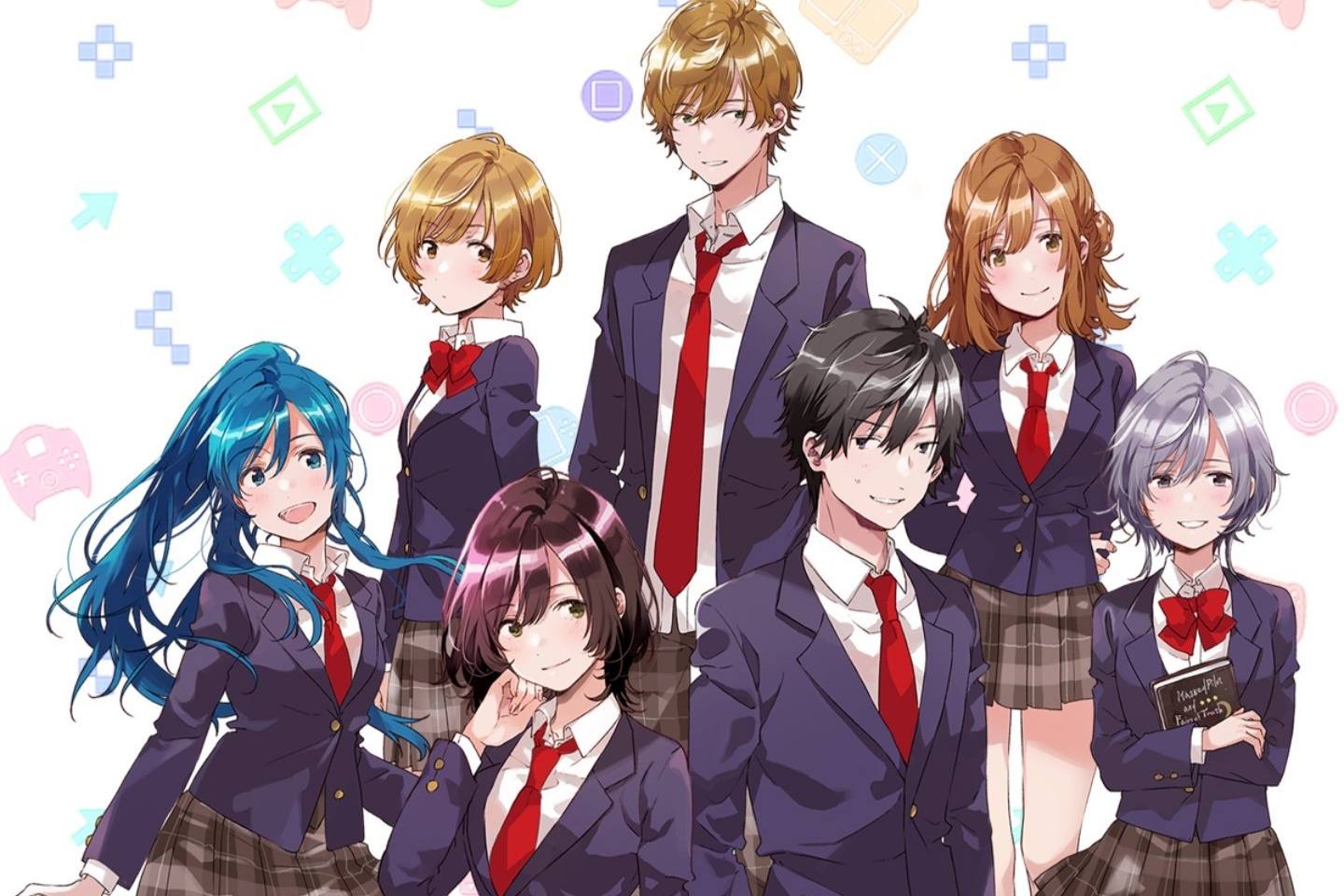
As a skilled gamer, Fumiya approaches real-life challenges with the same strategic mindset he employs in “Attack Families.” The series incorporates gaming elements and terminology to illustrate Fumiya’s thought process and decision-making, adding depth and creativity to the narrative.
The artwork in both the manga and anime adaptations of “Bottom-Tier Character Tomozaki” is vibrant, expressive, and well-suited to the tone of the series. The character designs are distinctive and convey the personalities of the protagonists, while the backgrounds and settings effectively capture the atmosphere of high school life.
The anime adaptation features fluid animation, dynamic camera angles, and expressive character animations that bring the story to life. The use of visual effects and music enhances the emotional impact of key moments, drawing viewers into Fumiya’s journey of self-discovery and personal growth.
“Bottom-Tier Character Tomozaki” has received positive reviews from both critics and audiences for its relatable characters, engaging storyline, and thoughtful exploration of social issues. The series has resonated with viewers who appreciate its realistic portrayal of high school life and its message of self-acceptance and personal growth.
The anime adaptation in particular has been well-received for its faithful adaptation of the source material, strong voice-acting performances, and stylish animation. It has introduced “Bottom-Tier Character Tomozaki” to a wider audience and has sparked discussions about social anxiety, self-esteem, and the challenges of adolescence.
“Bottom-Tier Character Tomozaki” is a heartfelt and insightful series that combines elements of gaming, romance, and coming-of-age drama. Through Fumiya’s journey of self-discovery and personal growth, the series offers valuable lessons about confidence, friendship, and the importance of being true to oneself.
With its relatable characters, engaging storyline, and positive message, “Bottom-Tier Character Tomozaki” is a must-watch for fans of slice-of-life anime and coming-of-age stories.
1. Endo and Kobayashi Live! The Latest on Tsundere Villainess Lieselotte

Endo and Kobayashi Live! The Latest on Tsundere Villainess Lieselotte offers a fresh twist on the typical villainess isekai narrative. Instead of transporting its characters into an otome game world, Shihono and Aoto gain the ability to communicate directly with the characters within the game, MagiKoi.
They focus their attention on Lieselotte, the tsundere villainess, and Siegwald, the main love interest. By guiding Lieselotte towards self-acceptance and warmth, they hope to alter her tragic fate.
While the anime is packed with otome game tropes more common in anime than real games, its strength lies in its well-developed cast of characters, both within and outside of MagiKoi. Moreover, the premise highlights the allure of player choice, as Shihono wields her literal voice to influence the story according to her preferences. This blend of engaging characters and interactive storytelling makes Endo and Kobayashi Live! stand out in the genre.
“Endo and Kobayashi Live! The Latest on Tsundere Villainess Lieselotte” is a Japanese light novel series written by Yasuhiro Miyama and illustrated by Yuusuke Takeda. The series has also been adapted into a manga. It revolves around the comedic and quirky dynamics between two protagonists, Endo and Kobayashi, who work as radio hosts.
The twist comes when they find themselves entangled in a popular otome game, “Revolution of the Rune Princess,” and become involved with Lieselotte, the tsundere villainess of the game. The story begins when Endo and Kobayashi, two radio hosts with a knack for banter and comedy, stumble upon an unusual phenomenon during one of their broadcasts.
They are suddenly transported into the world of “Revolution of the Rune Princess,” an otome game known for its intricate plot and charming characters. Much to their surprise, Endo and Kobayashi find themselves trapped inside the game, where they encounter Lieselotte, the tsundere villainess of the story.
As they navigate the fantastical world of the game, Endo and Kobayashi must adapt to their new roles and find a way to return to their own world. Along the way, they form unlikely alliances, uncover hidden truths about Lieselotte’s character, and confront the challenges of life in a fictional universe. Through their adventures, they learn valuable lessons about friendship, empathy, and the power of storytelling.
Endo: One of the two protagonists and a radio host with a quick wit and a penchant for sarcasm. Endo is the more level-headed of the pair, often serving as the voice of reason in their adventures. Despite his initial skepticism about the otome game world, Endo embraces the opportunity to explore new experiences and form connections with its inhabitants.
Kobayashi: The other protagonist and Endo’s eccentric co-host. Kobayashi is energetic, enthusiastic, and prone to impulsive decisions, often leading the duo into unpredictable situations. His boundless curiosity and sense of adventure drive much of the plot, as he eagerly immerses himself in “Revolution of the Rune Princess” and befriends its colorful cast of characters.
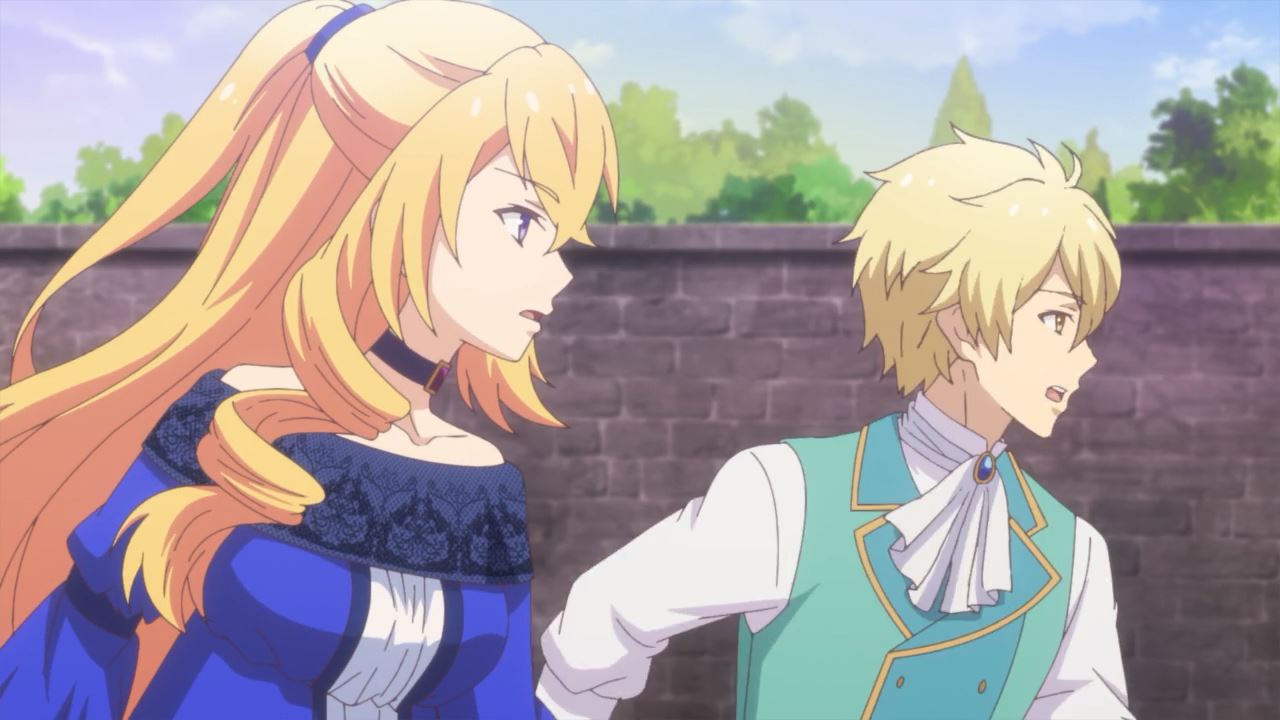
Lieselotte: The tsundere villainess of “Revolution of the Rune Princess” and one of the central figures in the story. Lieselotte initially views Endo and Kobayashi as intruders in her world and treats them with hostility and suspicion. However, as they get to know each other better, Lieselotte gradually reveals her softer side and forms a reluctant alliance with the protagonists.
Endo and Kobayashi Live! is a metafictional romp that satirizes and celebrates the tropes of the otome game genre. Through its self-aware humor and playful references to gaming culture, the series offers a fresh and irreverent take on familiar conventions, subverting expectations and keeping readers on their toes.
At its core, the series is about the power of friendship and empathy to bridge the gap between different worlds and perspectives. Endo and Kobayashi’s interactions with Lieselotte and other characters challenge their preconceived notions and foster understanding and camaraderie, demonstrating the transformative impact of human connection.
With its witty dialogue, slapstick humor, and quirky characters, “Endo and Kobayashi Live!” is a light-hearted and entertaining read that never takes itself too seriously. The series revels in absurd situations, comedic misunderstandings, and playful banter, keeping readers engaged and amused from start to finish.
The artwork in both the light novel and manga adaptations of “Endo and Kobayashi Live!” is expressive, dynamic, and full of personality. The character designs are distinctive and memorable, capturing the essence of each character’s personality and quirks. The illustrations effectively convey the humor and whimsy of the series, enhancing the overall reading experience.
“Endo and Kobayashi Live!” has garnered positive reviews from fans and critics alike for its clever premise, charming characters, and humorous execution. The series has found success both in Japan and internationally, appealing to readers of all ages with its blend of comedy, fantasy, and romance.
“Endo and Kobayashi Live! The Latest on Tsundere Villainess Lieselotte” is a delightful and entertaining series that offers a fresh and irreverent take on the otome game genre.
With its witty humor, endearing characters, and playful metafictional elements, the series is sure to grab readers and leave them eagerly awaiting the next installment. Whether you’re a fan of gaming culture, romantic comedy, or offbeat humor, “Endo and Kobayashi Live!” has something for everyone to enjoy.
“Endo and Kobayashi Live delivers an electrifying performance, blending traditional Japanese instrumentation with contemporary flair. Their seamless synergy excites, evoking a spectrum of emotions. The duo’s mastery of taiko drumming and shamisen strings creates an unforgettable experience, immersing audiences in an enchanting journey through sound.

